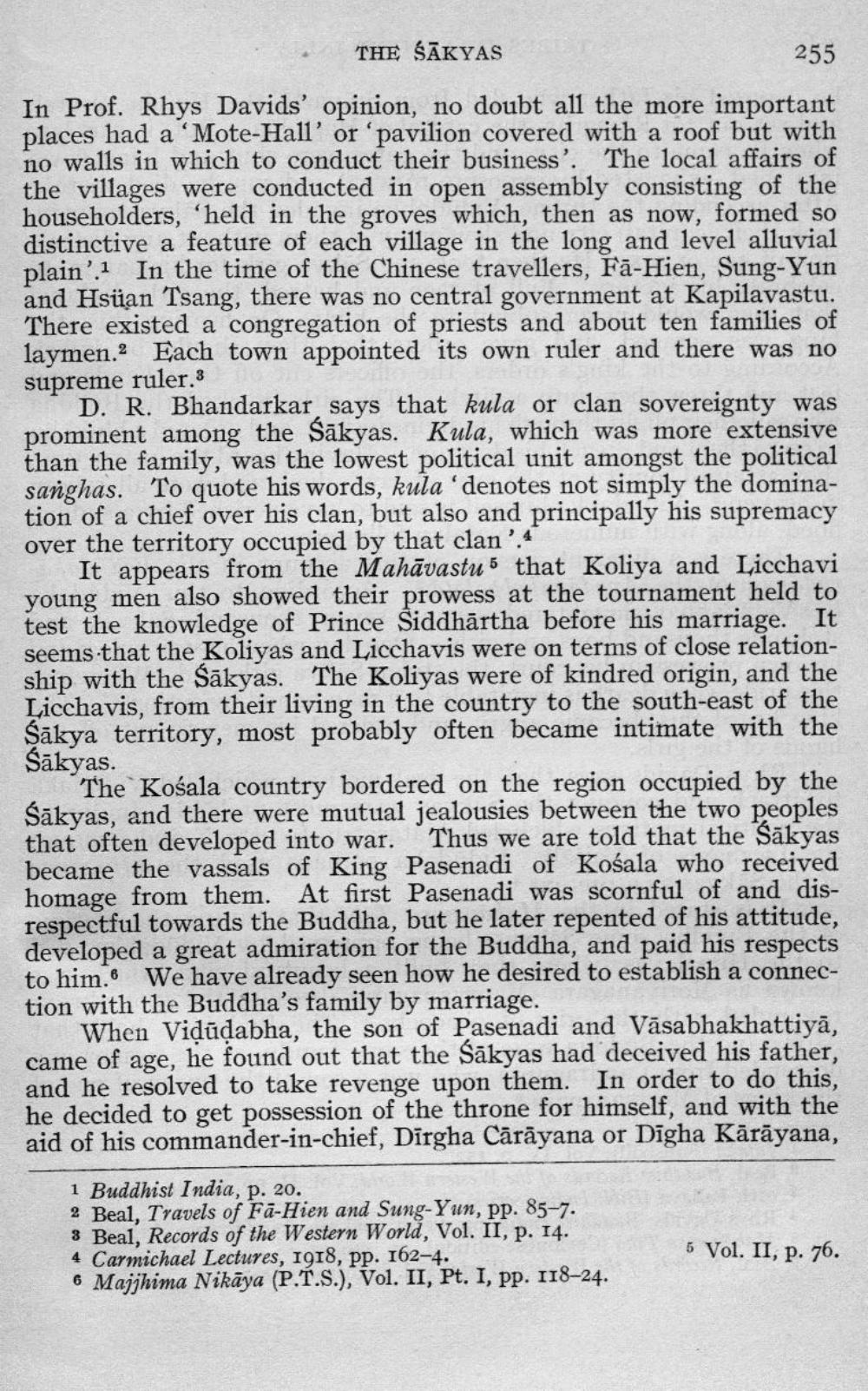________________
THE SĀKYAS
255 In Prof. Rhys Davids' opinion, no doubt all the more important places had a 'Mote-Hall' or 'pavilion covered with a roof but with no walls in which to conduct their business'. The local affairs of the villages were conducted in open assembly consisting of the householders, 'held in the groves which, then as now, formed so distinctive a feature of each village in the long and level alluvial plain'.1 In the time of the Chinese travellers, Fā-Hien, Sung-Yun and Hsüan Tsang, there was no central government at Kapilavastu. There existed a congregation of priests and about ten families of laymen.2 Each town appointed its own ruler and there was no supreme ruler.
3 D. R. Bhandarkar says that kula or clan sovereignty was prominent among the Sākyas. Kula, which was more extensive than the family, was the lowest political unit amongst the political sanghas. To quote his words, kula 'denotes not simply the domination of a chief over his clan, but also and principally his supremacy over the territory occupied by that clan'.4
It appears from the Mahāvastu 5 that Koliya and Licchavi young men also showed their prowess at the tournament held to test the knowledge of Prince Siddhārtha before his marriage. It seems that the Koliyas and Licchavis were on terms of close relationship with the Sākyas. The Koliyas were of kindred origin, and the Licchavis, from their living in the country to the south-east of the Sākya territory, most probably often became intimate with the Sākyas.
The Kośala country bordered on the region occupied by the Sākyas, and there were mutual jealousies between the two peoples that often developed into war. Thus we are told that the Sākyas became the vassals of King Pasenadi of Kośala who received homage from them. At first Pasenadi was scornful of and disrespectful towards the Buddha, but he later repented of his attitude, developed a great admiration for the Buddha, and paid his respects to him. We have already seen how he desired to establish a connection with the Buddha's family by marriage.
When Vidūdabha, the son of Pasenadi and Vāsabhakhattiyā, came of age, he found out that the sākyas had deceived his father, and he resolved to take revenge upon them. In order to do this, he decided to get possession of the throne for himself, and with the aid of his commander-in-chief, Dīrgha Cārāyana or Dīgha Kārāyana,
1 Buddhist India, p. 20. 2 Beal, Travels of Fā-Hien and Sung-Yun, pp. 85-7. 3 Beal, Records of the Western Worlă, Vol. II, p. 14. 4 Carmichael Lectures, 1918, pp. 162-4. 6 Majjhima Nikāya (P.T.S.), Vol. II, Pt. I, pp. 118-24.
5 Vol. II, p. 76.




